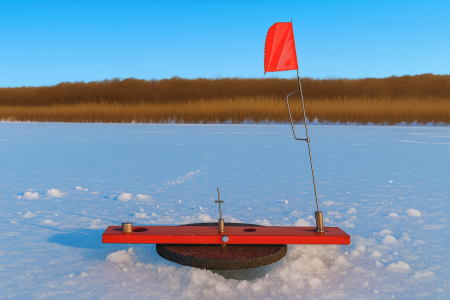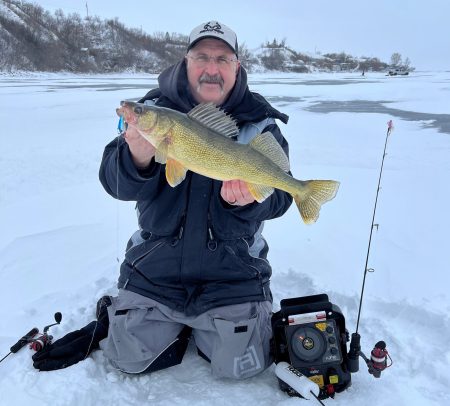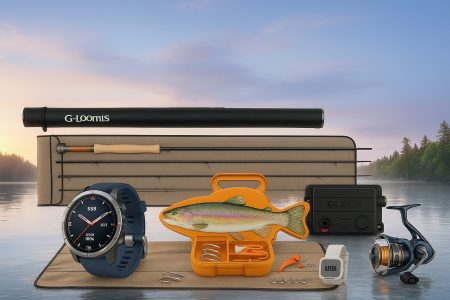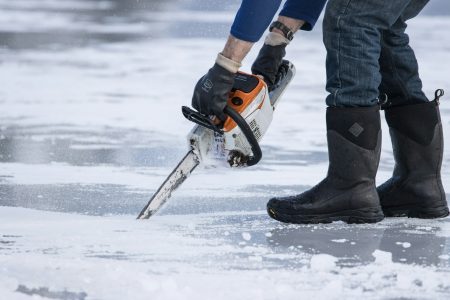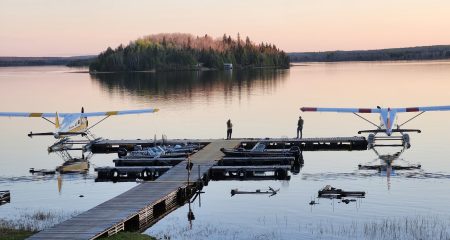I’ve spent a lifetime icefishing for walleye. Over the years, I’ve discovered some key tools, concepts and patterns to help me catch walleye through the ice. Some of the things you can buy, some were learned by trial and error and others are simply understanding Mother Nature and working with what she offers. The combination of these items is what I call my Winter Walleye Weapons.
Location
Throughout the icefishing season, they relate to structure such sandbars, rock piles, humps, drop offs and ledges. In the early stages of winter, walleye are often found near shallow underwater structure and will cruise nearby sandy flats throughout the day to feed aggressively. As the winter progresses, walleye move into deeper water of ledges and drops offs to stage and feed. During latter part of the icefishing season, walleye move back into shallow water areas. In addition, they’ll often move into areas with underwater current, such as the downstream side of sandbars and rock humps. They’ll also move towards river mouths, springs or water inlets where runoff from melting snow enters the water system and on.
Walleye have core areas that they traditionally use at similar time frames from year to year. The key to knowing when walleye will be utilizing different areas is keeping track of where and when you catch walleye. Over a period of time, patterns will develop. On each outing, track how aggressive the bite is, what time of day the fish bite and how many fish are caught. When the bite slows right down or stops its time to move as the fish have moved somewhere else.
If you’ve kept a detailed journal for a few seasons you will have plenty of historical places to fish next. However, if you’re just starting out or haven’t kept a journal of when and where the walleye have been biting, start networking with other anglers. When networking with other anglers, you need to gain their trust and not take an army of people to the area you put you on. In addition, you have to be able to give out intel in order to receive information from other anglers. If nothing else, look for concentrations of anglers on the ice and fish in the same general areas they are. However, don’t just barge in on them like you own the area. Instead, keep your distance and fish the outer edges of a crowd. While doing so, figure out what the structure in the area is like and possibly search out other similar areas you can fish on your own or without a large crowd.
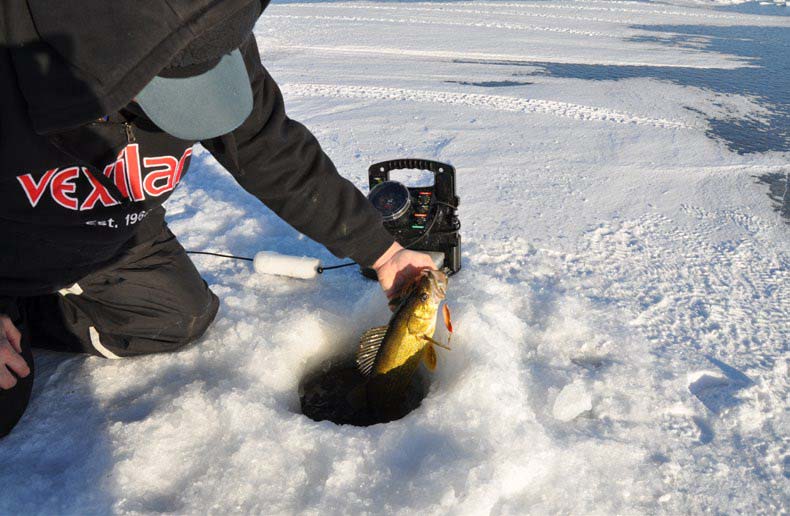
Mobility
Even if you have the best location ever, don’t just drill one hole and sit there waiting for walleye to bite. Drill several holes and move from hole to hole. Think of it as “winter trolling”. Sometime all it takes is moving a few feet in one direction or the other. On other occasions it may involve moving a few hundred feet on a feeding flat or to the other side of a sand bar. Some moves will keep you fishing at the same depth, while others may have you fishing a little deeper or shallower. Keep track of the best water depths that produced fish and the time of day, so you can refine your patterning.
Stable Weather
Once you know where the fish should be biting, watch the weather. Look for extended periods of stable weather because under these conditions, walleye settle into very routine feeding patterns. When the conditions are prime, take advantage of the weather pattern. Drop everything you can so you can and focus on fishing. Try to fish as much as you can, because when a cold front hits and the temperatures plummet, the fishing action will slow down for several days and won’t get pick up again until the weather stabilizes. When the weather stabilizes again, get back out there but keep in mind that a strong cold front or a series of consecutive smaller cold fronts can push walleye to their next staging area.
If you can fish the day before a major cold front hits, you may experience some of the best walleye fishing of the season. This weather pattern happened one day last January where a group of us watched the weather and were on the ice the day before a giant cold front was scheduled to hit. The temperature that day was forecasted to rise above the freezing mark and was to be followed by a sharp drop into the minus 30’s for the next several days. The weatherman was bang on with the forecast and the walleye didn’t disappoint us. Not only was the action that day hot and heavy, we landed several truly giant fish.
Rods And Reels
A fishing rod with a sensitive tip and a solid backbone coupled with a spinning reel is a must for walleye fishing. Since winter walleye fishing often involves hole hoping and I like to be able to move quickly from hole to hole I generally stand up while doing so. As a result, I prefer longer icefishing rods in the 32 to 38 inch lengths as they are perfect length to be able to stand and fish. In addition to longer rods, I also prefer rods with bigger line guides as these helps prevent the line from freezing to the rod guides. My personal preference is a medium action rod but I’ll also use a medium heavy rod when fishing larger lures.
A light weight spinning reel helps increases the ability to move as you simply open the bail to let the lure drop. In addition, the open face of the spinning reel allows your line and any freeze ups or tangles before they get too far out of hand.

Fishing Line
For years, I fished with braided line for my winter walleye fishing as I enjoyed the sensitivity of the braided line along with its rugged durability around the jagged edges of icefishing holes. While I never had a line break when using braided line, I did find the line was often too sensitive which resulted in premature hook sets and lost fish. To help swing the odds in my favor, I switched to monofilament line. While hook sets went up, fish were periodically lost before they could be brought top side when the line would break after getting snagged on the rough edges of a hole.
The day I switched over to fluorocarbon, I knew I had found the perfect line for catching winter walleye. Not only is this fishing line sensitive, it is extremely durable. Given its durability, I have also downsized to 4 and 6 pound test line which further enhances the sensitivity and makes it virtually invisible under water. An added bonus with fluorocarbon line is that it can be used as a mainline or as a leader attached to braided line.
Lures And Proper Presentation
Winter walleye fishing requires a good selection of lures. While some days call for a finesse approach with minnows suspended from a tiny lure, I seem to have the most success when using jigging spoons such as PK Lures Spoons and Flutter Fish and with vertical jigging lures such as Rapala Jigging Raps and Shad Raps as these styles of lures can be used to both attract and finesse walleye.
When selecting lures keep in mind that every lure has its own unique action and even changing between sizes of the same lure will change the action. For example, heavier spoons will fall to the bottom quicker than lighter spoons and hit the bottom with a more solid thud. Lighter spoons will drop more slowly and depending on their shape, more erratically.
As you bounce from hole to hole jigging for walleye, keep trying different styles and colors of lures until you find the magic combination. Silver, brass and gold lures work great as they give off lots of flash and glare. Natural lure colors that match local baitfish such as perch and cisco also work very well. On days when the traditional colors aren’t working try something different like white, pink or chartreuse.
The key to trigger walleye strikes is in the jigging motion. Try to find a jigging rhythm that attracts the fish. Don’t be afraid to periodically rip your lure up and let it thump on the bottom to create noise and silt. Then, before jigging upwards try partially lifting the lure from the bottom and twitching it to represent a minnow or crayfish trying to dig into the bottom to hide.
There are varied opinions with respect to using terminal tackle while walleye fishing. Some anglers never use snaps and swivels, while other anglers will never fish without them. As for myself, if I’m using a subtle approach with a jig and minnow, I’ll tie the lures directly to my line. However, if I’m aggressively jigging I’ll use an in line swivel 18” above my offering.
Electronics
Although I catch walleye in the same traditional areas that have produced fish for years, my approach has become much more modernized. No longer are the good ‘ole fishing locations found based on landmarks and triangulation. Instead, handheld and dash mounted GPS units are utilized to save fishing locations. When marking the fishing way points on these units, additional information including water depth and time of year is added to ensure the right location is being fished at the right time of the year.
Once on location, I’ll utilize both a flasher and an underwater camera and a flasher unit to enhance my fishing experience.
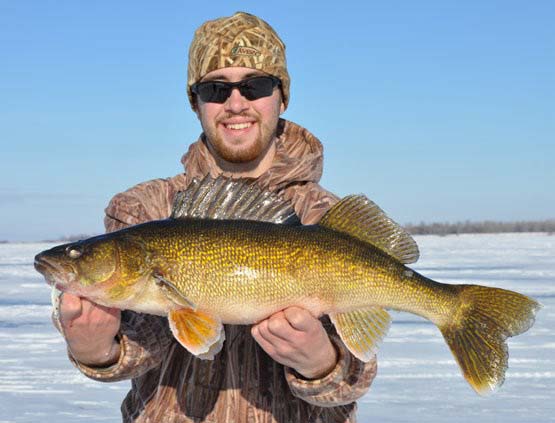
My flasher is set up in the same hole that I’m fishing in. I use the flasher to watch my lure in action to see if it attracts or repels fish. There’s no doubt, that I could jig without a flasher, but my success has improved improve dramatically since I started using one because with the flasher, I can see how the fish respond to my presentation and interact with fish that approach my lure.
For example, it’s often long aggressive sweeping jigging actions that draw walleye closer. If the fish smash the lure as its being jigged, that’s the presentation for the day. However, in many cases, this same action will spook the fish when they are at close range. If this is the case, I will change my jigging approach to slow and stubble motions as soon as a fish is spotted on the flasher. This is achieved by simply twitching the lure, making it rise slowly or dropping it to the bottom and rocking it just enough to make it vibrate and stir up silt.
Over the years, I’ve used several different flashers, but have come to prefer the Vexilar unit, because it has split screen capabilities that allow me to see the entire water column on one side of the flasher and the bottom six feet on the other side, with a target ID of half an inch to help pick up bottom hugging walleye. In addition, I have also started using the Humminbird Helix from my boat as the unit can be converted to a flasher unit and I can use the mapping information and way points that I created during the open water season to get me right on the spots I want to fish.
Under water cameras can provide valuable information about the area. They can be used to check out the bottom structure, water clarity and simply watch for and observe walleye. When fishing with a camera, I will fish in one hole and drill a second close by hole to drop the camera in so I can monitor my lure and any incoming walleye.
Staying Warm
Staying warm is essential to catching walleye through the ice. This means dressing appropriately and utilizing ice shelters to help break the wind. While permanent structures are great at keep anglers warm, they don’t allow the mobility required to flip from hole to hole in search of walleye. The flip style ice shelters are ideal walleye ice fishing shelter as they can easily be moved from hole to hole and the shelter can be used as a wind block or flipped over and used as an enclosed shelter.
On even the coldest of days, a well-dressed angler with a good moisture wicking base layer combined with additional layers of insulating layers covered by a wind blocking outer layer can move around and fish without a shelter.
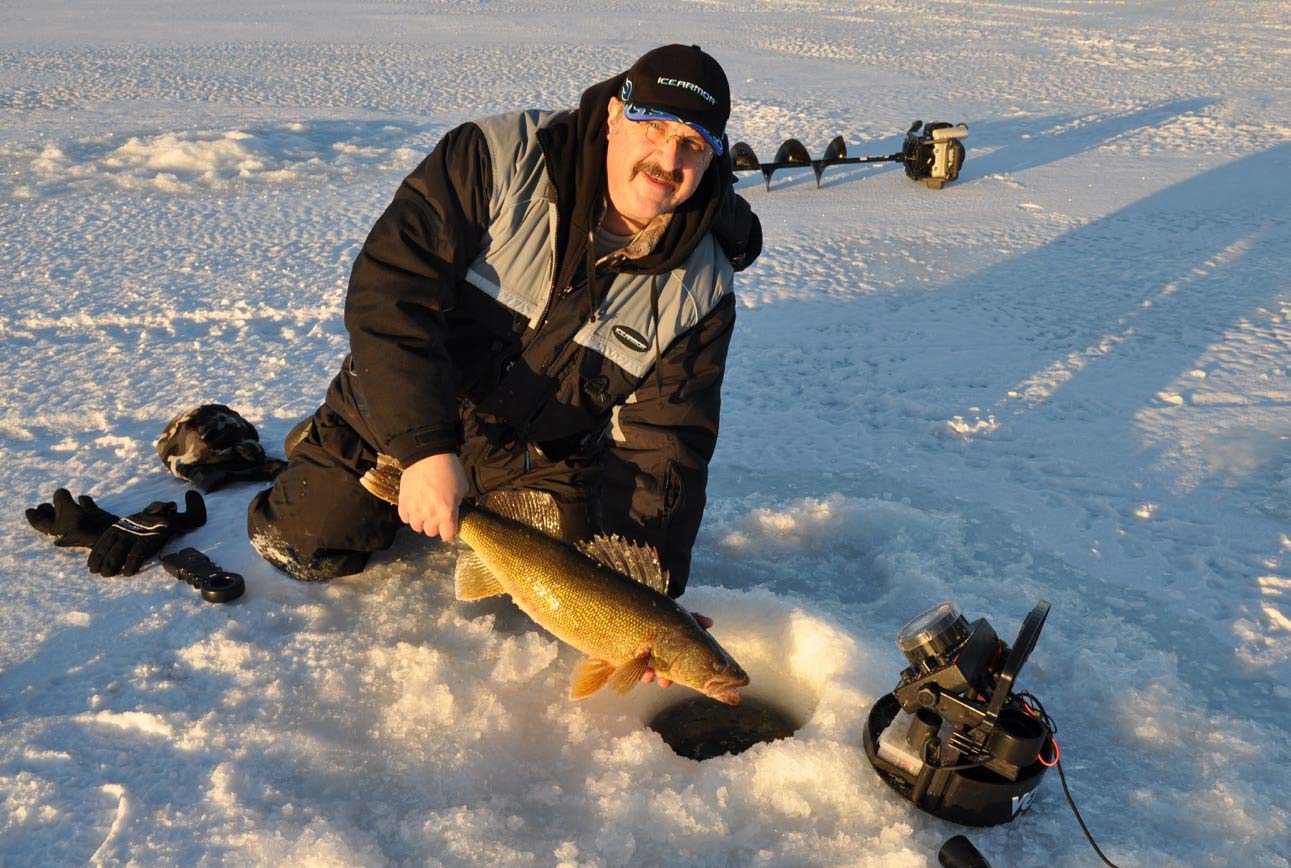
As you begin to catch more walleye and possibly even bigger walleye, it’s great to practice conservation rules that help protect the walleye populations. Releasing large fish for future spawning and real small fish to grow into bigger fish is true conservation.
Keep some fish to eat, but make sure not to keep more fish than you can eat. When releasing fish, keep in mind that cold temperatures and icy winds can quickly damage a walleye’s eyes. So, when releasing a fish, make sure it is released as quickly as possible and isn’t exposed to the above ice conditions for an extended period. To capture the memory, snap a quick picture or two and then quickly return the fish to the water.
Another thing to keep in mind is that walleye caught in water depths of 30 feet or more will have a low chance of survival unless they are released using an anti-barotrauma descending device.
By Mike Hungle
Per our affiliate disclosure, we may earn revenue from the products available on this page. To learn more about how we test gear, click here.







